 Web Front-end
Web Front-end
 JS Tutorial
JS Tutorial
 A brief discussion on the usage of parent-child tables and row and column ordering in Bootstrap table
A brief discussion on the usage of parent-child tables and row and column ordering in Bootstrap table
A brief discussion on the usage of parent-child tables and row and column ordering in Bootstrap table
this article combines the usage of the parent-child table and row-column ordering of the bootstrap table, and then introduces its slightly more advanced usage. it has certain reference value. friends in need can refer to it. i hope it will be helpful to everyone.
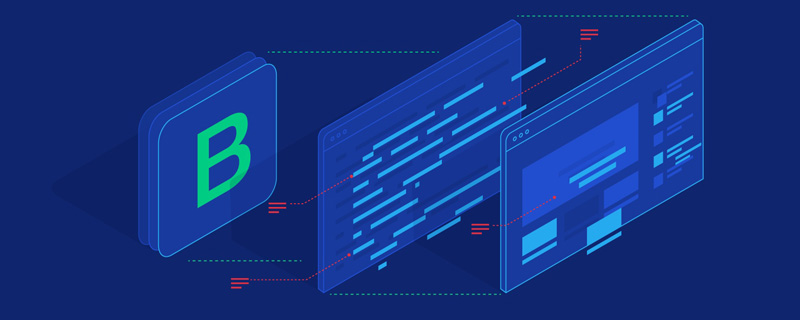
[related recommendations: "bootstrap tutorial》]
1. effect display
today we will change the method slightly and let’s take a look at the effect first. , the code implementation and precautions will be introduced later. come on, here are the renderings:
1. father-son table renderings
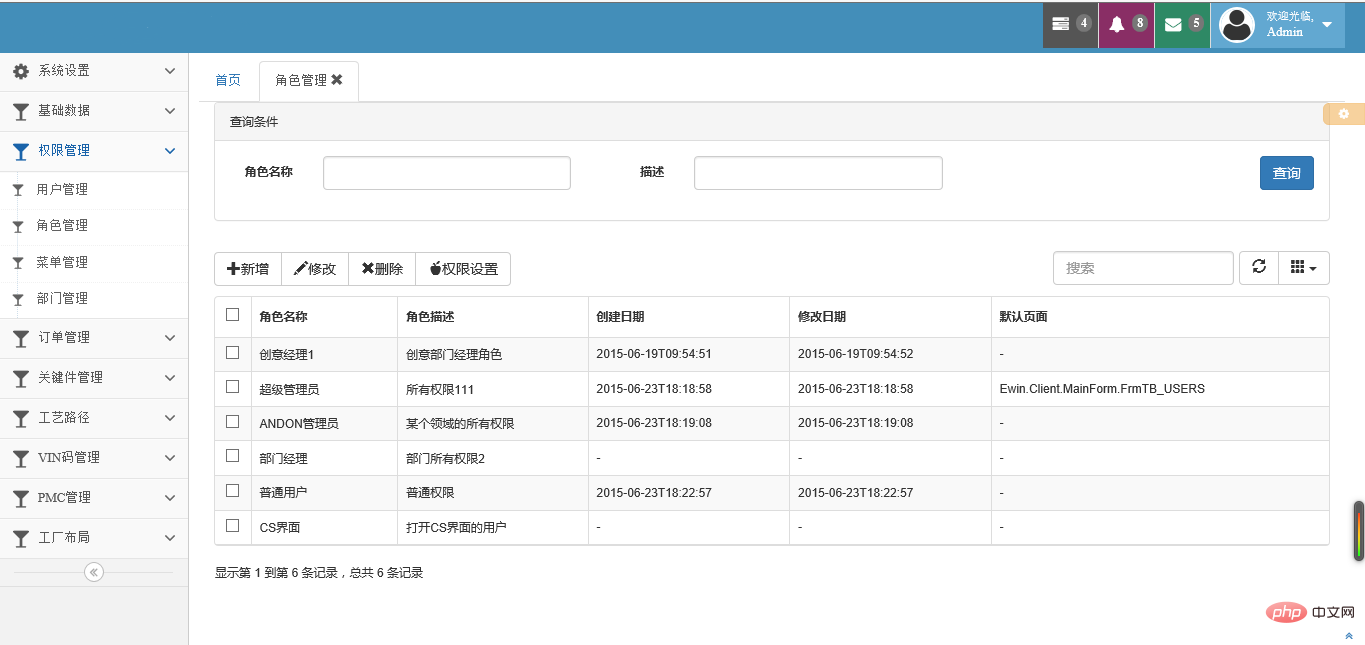
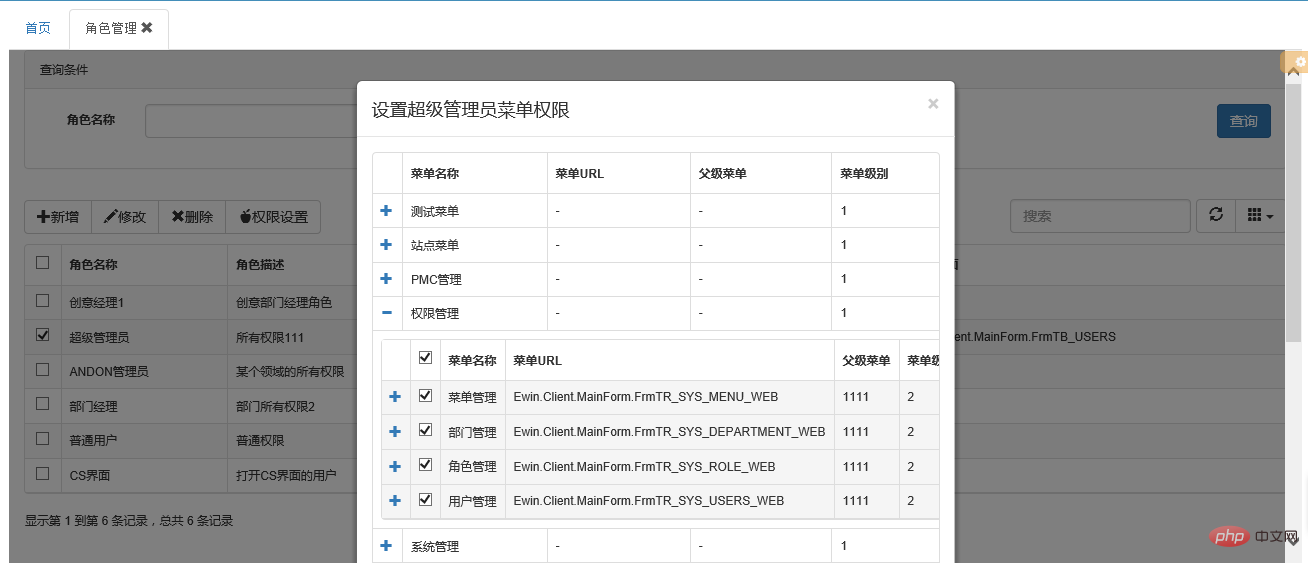
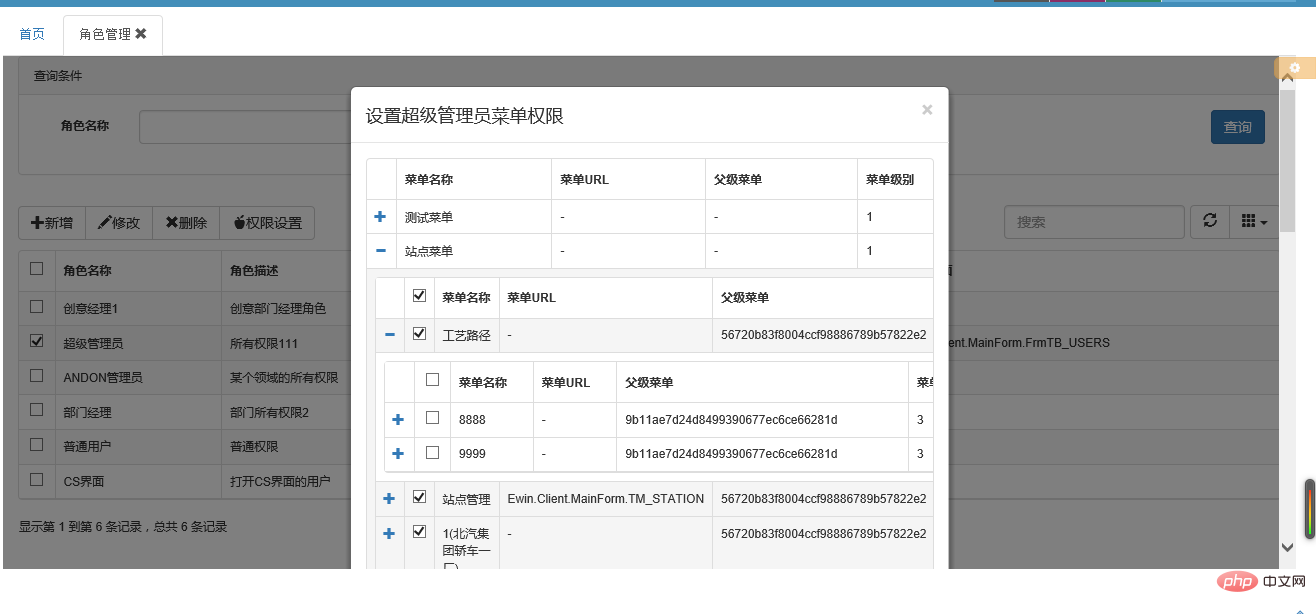
2. row reordering
before resequencing
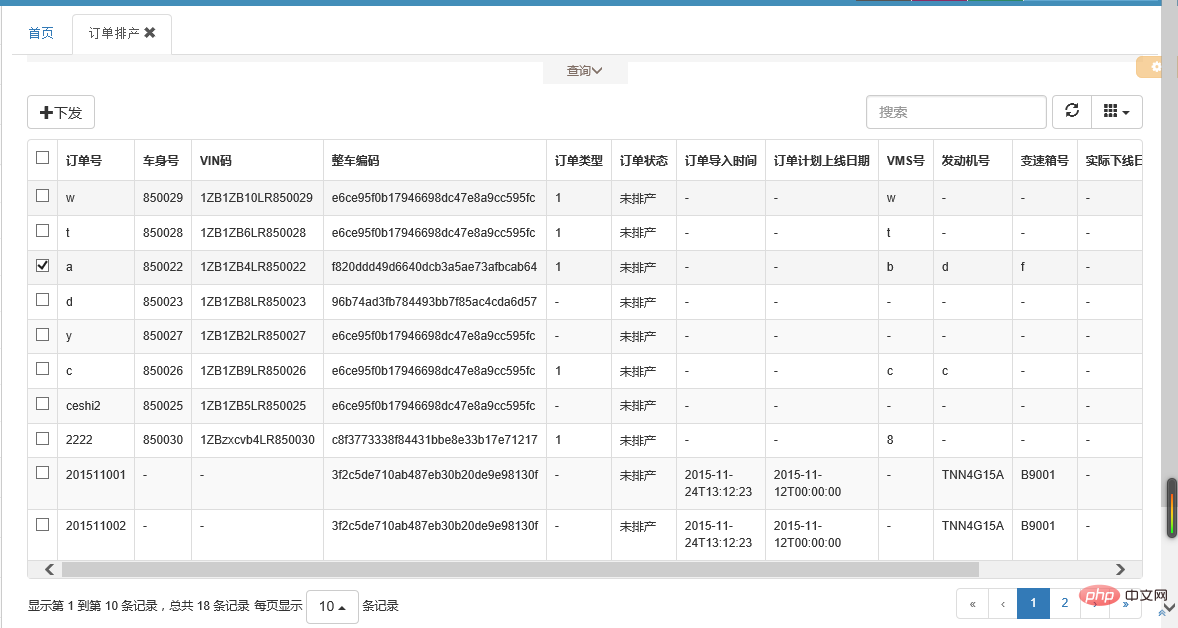
drag row reordering order to the first row
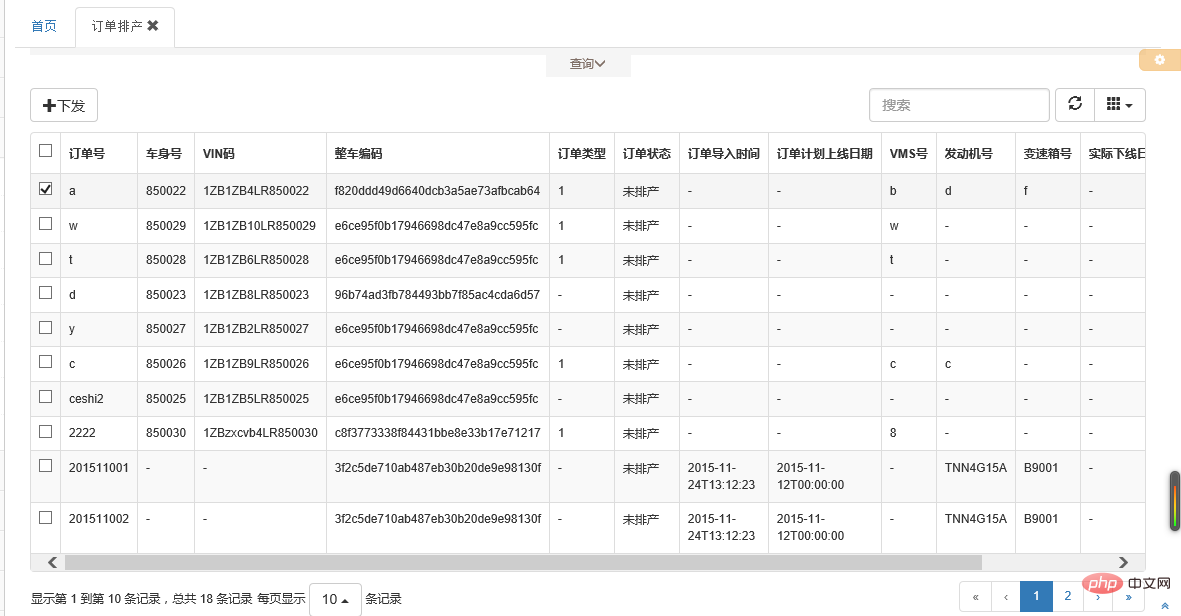
3. column ordering
before ordering
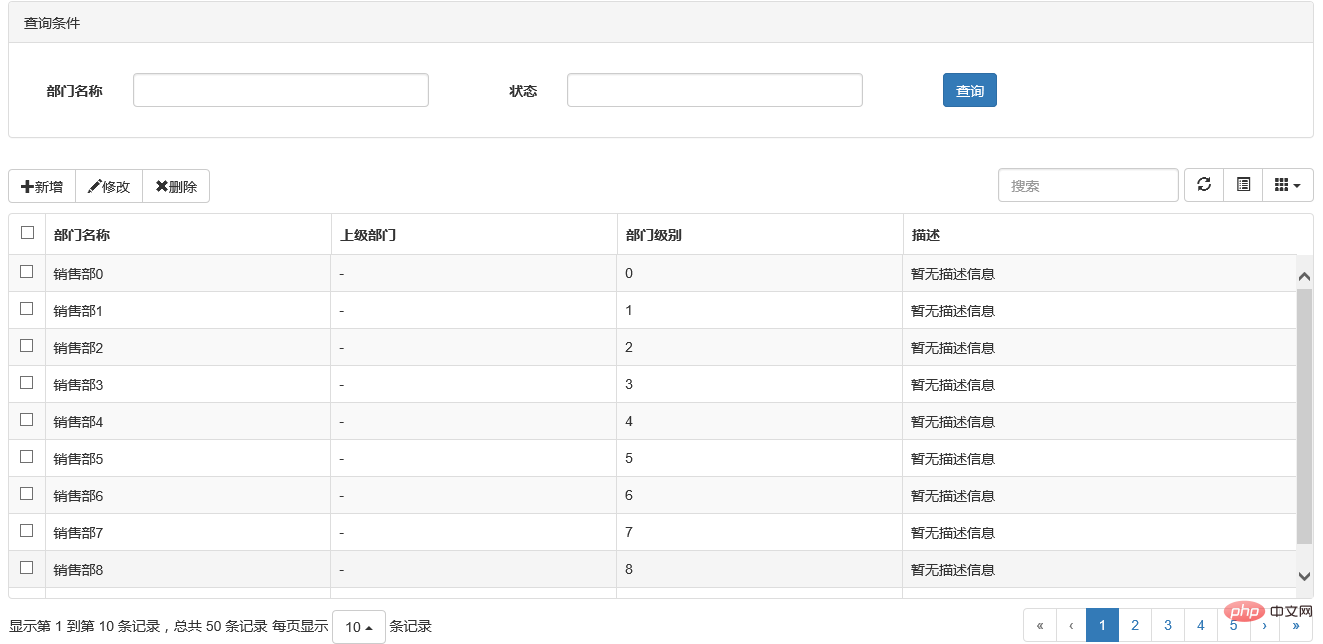
drag the column title to sort
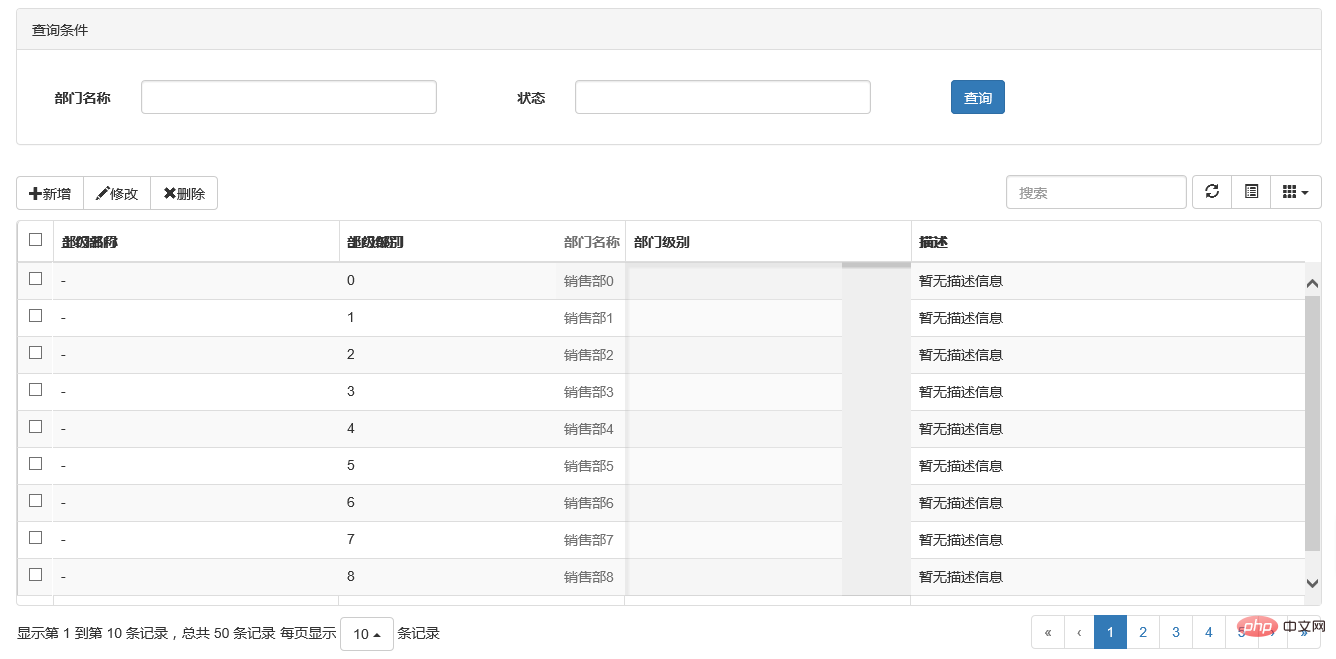
after sorting
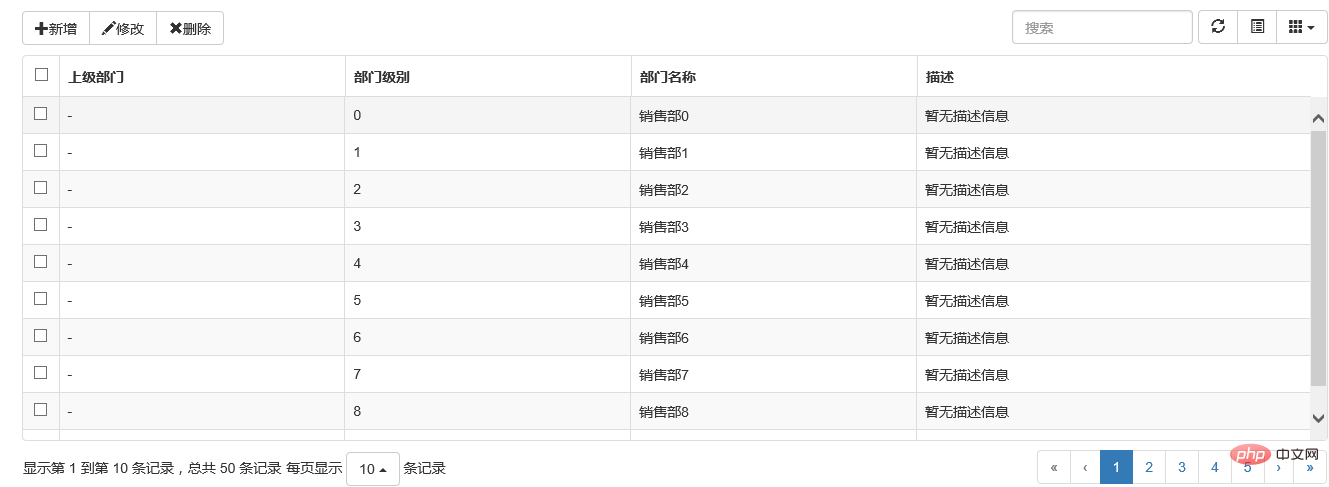
two , detailed explanation of the code of the parent-child table
in the previous chapter, we introduced the basic usage of the bootstrap table. when initializing the table, there is an attribute "detailview". set it to true, and in each row you can see an icon in the shape of " " in front of you. clicking this icon triggers the event of loading the subtable. this is the general principle. let's take a look at the code. it's actually very simple.
1. initialize the table and register the row expansion event
$("#tb_powerset").bootstraptable({
url: '/api/menuapi/getparentmenu',
method: 'get',
detailview: true,//父子表
//sidepagination: "server",
pagesize: 10,
pagelist: [10, 25],
columns: [{
field: 'menu_name',
title: '菜单名称'
}, {
field: 'menu_url',
title: '菜单url'
}, {
field: 'parent_id',
title: '父级菜单'
}, {
field: 'menu_level',
title: '菜单级别'
}, ], //注册加载子表的事件。注意下这里的三个参数!
onexpandrow: function (index, row, $detail) {
oinit.initsubtable(index, row, $detail);
}
});let’s take a look at the subtable loading event onexpandrow corresponding method function (index, row, $detail ),
index: the row index of the current row of the parent table.
row: json data object of the current row of the parent table.
$detail: the td object in the new row created below the current row.
the third parameter is particularly important because the generated subtable table is loaded in the $detail object. the bootstrap table generates the $detail object for us, and then we only need to fill it with the table we want.
2. let’s look at the oinit.initsubtable() method
//初始化子表格(无线循环)
oinit.initsubtable = function (index, row, $detail) { var parentid = row.menu_id; var cur_table = $detail.html('<table></table>').find('table');
$(cur_table).bootstraptable({
url: '/api/menuapi/getchildrenmenu',
method: 'get',
queryparams: { strparentid: parentid },
ajaxoptions: { strparentid: parentid },
clicktoselect: true,
detailview: true,//父子表
uniqueid: "menu_id",
pagesize: 10,
pagelist: [10, 25],
columns: [{
checkbox: true
}, {
field: 'menu_name',
title: '菜单名称'
}, {
field: 'menu_url',
title: '菜单url'
}, {
field: 'parent_id',
title: '父级菜单'
}, {
field: 'menu_level',
title: '菜单级别'
}, ], //无线循环取子表,直到子表里面没有记录
onexpandrow: function (index, row, $subdetail) {
oinit.initsubtable(index, row, $subdetail);
}
});
};it can be seen that the principle of generating a subtable is to create a table object cur_table , and then register the table initialization of this object. isn’t it very simple~~
3. detailed explanation of the row sequence code
the row sequence code is even simpler, let’s take a look.
1. two additional js files need to be referenced
<script src="~/content/jquery-ui-1.11.4.custom/external/jquery.tablednd.js"></script> <script src="~/content/bootstrap-table/extensions/reorder-rows/bootstrap-table-reorder-rows.js"></script>
2. when defining the table on the cshtml page, add two attributes
<table id="tb_order" data-use-row-attr-func="true" data-reorderable-rows="true"></table>
then there is no need to make any modifications when the js table is initialized, and the loaded table can realize the row ordering function.
4. detailed explanation of column ordering code
it is similar to row ordering. the use of column ordering is as follows:
1. reference a few additional js and css
<script src="~/content/bootstrap-table/extensions/reorder-columns/bootstrap-table-reorder-columns.js"></script> <link rel="stylesheet" href="../assets/examples.css"> <link rel="stylesheet" href="https://rawgit.com/akottr/dragtable/master/dragtable.css"> <script src="https://code.jquery.com/ui/1.11.4/jquery-ui.js"></script> <script src="https://rawgit.com/akottr/dragtable/master/jquery.dragtable.js"></script> <script src="https://code.jquery.com/ui/1.11.4/jquery-ui.js"></script> <script src="https://code.jquery.com/ui/1.11.4/jquery-ui.js"></script>
2. when defining the table on the cshtml page, add an attribute
<table id="tb_departments" data-reorderable-columns="true"></table>
no need to make any modifications elsewhere. the loaded table can be sorted by columns. is it very simple?
5. control filtering
i was about to end this article, but suddenly i remembered that there was a search function in the previous chapter. it seems that the search function is not available when the server is paging. after using it, i remembered that i had done a function similar to filtering each column in cs before. the blogger became curious again. does bootstrap table also have this function of filtering each column of the table, so i checked the document. the result lives up to expectations, it really works~~ let’s take a look.
1. rendering display
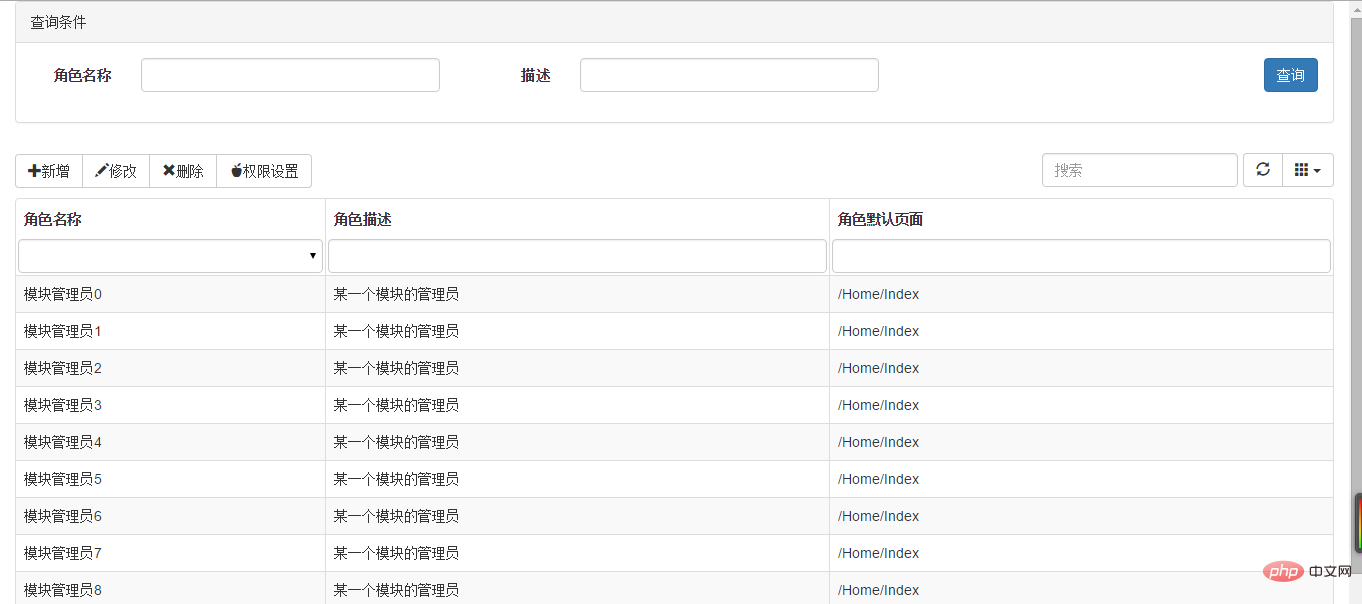



2. code example
(1) introduce additional js
<script src="~/content/bootstrap-table/extensions/filter-control/bootstrap-table-filter-control.js"></script>
(2) define table attributes and header attributes
<table id="tb_roles" data-filter-control="true"> <thead> <tr> <th data-field="role_name" data-filter-control="select">角色名称</th> <th data-field="description" data-filter-control="input">角色描述</th> <th data-field="role_defaulturl" data-filter-control="input">角色默认页面</th> </tr> </thead> </table>
because the header attributes are defined here, there is no need to define columns when js is initialized.
(3) js initialization
$('#tb_roles').bootstrapTable({
url: '/Role/GetRole',
method: 'get',
toolbar: '#toolbar',
striped: true,
cache: false,
striped: true,
pagination: true,
sortable: true,
queryParams: function (param) { return param;
},
queryParamsType: "limit",
detailView: false,//父子表
sidePagination: "server",
pageSize: 10,
pageList: [10, 25, 50, 100],
search: true,
showColumns: true,
showRefresh: true,
minimumCountColumns: 2,
clickToSelect: true,
});at first, the blogger thought this the search can only be done by client-side paging, but after debugging, it was found that this is not the case. it turns out that the search conditions can be passed to the server through json. let's look at the debugging process
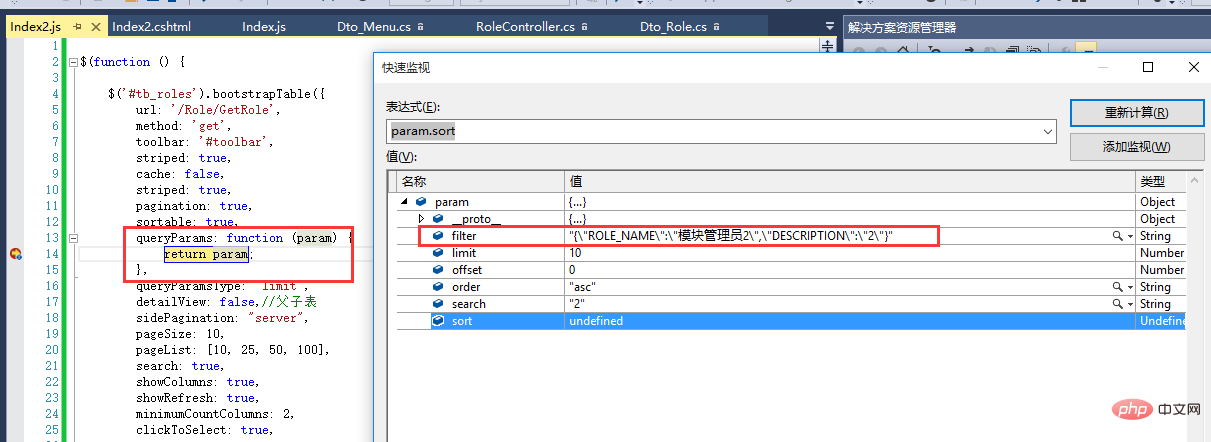
receive parameters in the background and deserialize them
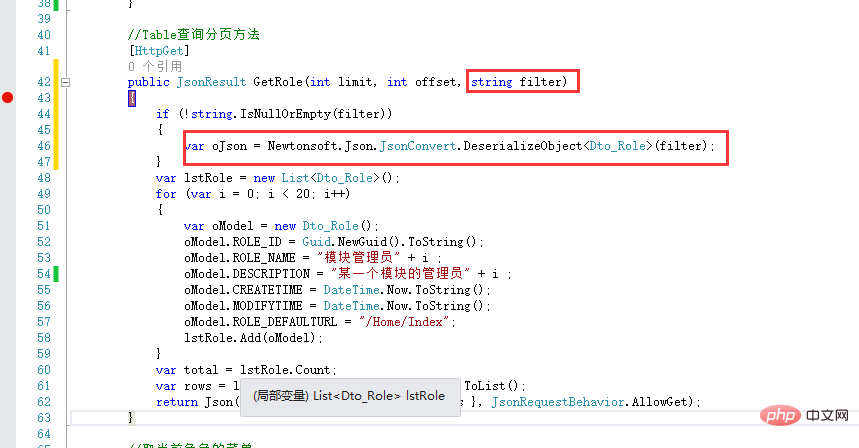
this way we can pass the query conditions to the background. very good and powerful. this eliminates the trouble of extending the table search function~~
6. summary
the above are some extended applications of bootstrap table. it may not be comprehensive, and some advanced usages are not introduced, such as merging rows and columns, freezing rows, etc. but the blogger believes that as long as there are documents, there should be no problem in using it. the source code still needs to be sorted out and will be uploaded after it is sorted out. garden friends, let’s take a look first! !
for more programming-related knowledge, please visit: introduction to programming! !

Hot AI Tools

Undresser.AI Undress
AI-powered app for creating realistic nude photos

AI Clothes Remover
Online AI tool for removing clothes from photos.

Undress AI Tool
Undress images for free

Clothoff.io
AI clothes remover

AI Hentai Generator
Generate AI Hentai for free.

Hot Article

Hot Tools

Notepad++7.3.1
Easy-to-use and free code editor

SublimeText3 Chinese version
Chinese version, very easy to use

Zend Studio 13.0.1
Powerful PHP integrated development environment

Dreamweaver CS6
Visual web development tools

SublimeText3 Mac version
God-level code editing software (SublimeText3)

Hot Topics
 1359
1359
 52
52
 Replace String Characters in JavaScript
Mar 11, 2025 am 12:07 AM
Replace String Characters in JavaScript
Mar 11, 2025 am 12:07 AM
Detailed explanation of JavaScript string replacement method and FAQ This article will explore two ways to replace string characters in JavaScript: internal JavaScript code and internal HTML for web pages. Replace string inside JavaScript code The most direct way is to use the replace() method: str = str.replace("find","replace"); This method replaces only the first match. To replace all matches, use a regular expression and add the global flag g: str = str.replace(/fi
 Build Your Own AJAX Web Applications
Mar 09, 2025 am 12:11 AM
Build Your Own AJAX Web Applications
Mar 09, 2025 am 12:11 AM
So here you are, ready to learn all about this thing called AJAX. But, what exactly is it? The term AJAX refers to a loose grouping of technologies that are used to create dynamic, interactive web content. The term AJAX, originally coined by Jesse J
 10 jQuery Fun and Games Plugins
Mar 08, 2025 am 12:42 AM
10 jQuery Fun and Games Plugins
Mar 08, 2025 am 12:42 AM
10 fun jQuery game plugins to make your website more attractive and enhance user stickiness! While Flash is still the best software for developing casual web games, jQuery can also create surprising effects, and while not comparable to pure action Flash games, in some cases you can also have unexpected fun in your browser. jQuery tic toe game The "Hello world" of game programming now has a jQuery version. Source code jQuery Crazy Word Composition Game This is a fill-in-the-blank game, and it can produce some weird results due to not knowing the context of the word. Source code jQuery mine sweeping game
 How do I create and publish my own JavaScript libraries?
Mar 18, 2025 pm 03:12 PM
How do I create and publish my own JavaScript libraries?
Mar 18, 2025 pm 03:12 PM
Article discusses creating, publishing, and maintaining JavaScript libraries, focusing on planning, development, testing, documentation, and promotion strategies.
 jQuery Parallax Tutorial - Animated Header Background
Mar 08, 2025 am 12:39 AM
jQuery Parallax Tutorial - Animated Header Background
Mar 08, 2025 am 12:39 AM
This tutorial demonstrates how to create a captivating parallax background effect using jQuery. We'll build a header banner with layered images that create a stunning visual depth. The updated plugin works with jQuery 1.6.4 and later. Download the
 How do I optimize JavaScript code for performance in the browser?
Mar 18, 2025 pm 03:14 PM
How do I optimize JavaScript code for performance in the browser?
Mar 18, 2025 pm 03:14 PM
The article discusses strategies for optimizing JavaScript performance in browsers, focusing on reducing execution time and minimizing impact on page load speed.
 Auto Refresh Div Content Using jQuery and AJAX
Mar 08, 2025 am 12:58 AM
Auto Refresh Div Content Using jQuery and AJAX
Mar 08, 2025 am 12:58 AM
This article demonstrates how to automatically refresh a div's content every 5 seconds using jQuery and AJAX. The example fetches and displays the latest blog posts from an RSS feed, along with the last refresh timestamp. A loading image is optiona
 Getting Started With Matter.js: Introduction
Mar 08, 2025 am 12:53 AM
Getting Started With Matter.js: Introduction
Mar 08, 2025 am 12:53 AM
Matter.js is a 2D rigid body physics engine written in JavaScript. This library can help you easily simulate 2D physics in your browser. It provides many features, such as the ability to create rigid bodies and assign physical properties such as mass, area, or density. You can also simulate different types of collisions and forces, such as gravity friction. Matter.js supports all mainstream browsers. Additionally, it is suitable for mobile devices as it detects touches and is responsive. All of these features make it worth your time to learn how to use the engine, as this makes it easy to create a physics-based 2D game or simulation. In this tutorial, I will cover the basics of this library, including its installation and usage, and provide a



